Through their interpretations of the Mojave Desert, artists add new layers to our understanding and appreciation of our environment. From realistic images to uncanny poetic impressionism, their portrayals invite us to see more sharply and think more deeply about a region often dismissed as a wasteland. The images are often breathtaking: starbursts of spiky Joshua tree leaves; sprawling root systems of pines; shifting soft light on the Spring Mountains; geometrically striking patterns on rattlesnakes; starlight over a mountainous setting for tribal creation stories; and ghostly faces of great-horned owls, kangaroo rats and foxes bellying up to the same midnight watering hole.
These are the stories of six Mojave artists and the way they reimagine our extraordinary desert landscape …
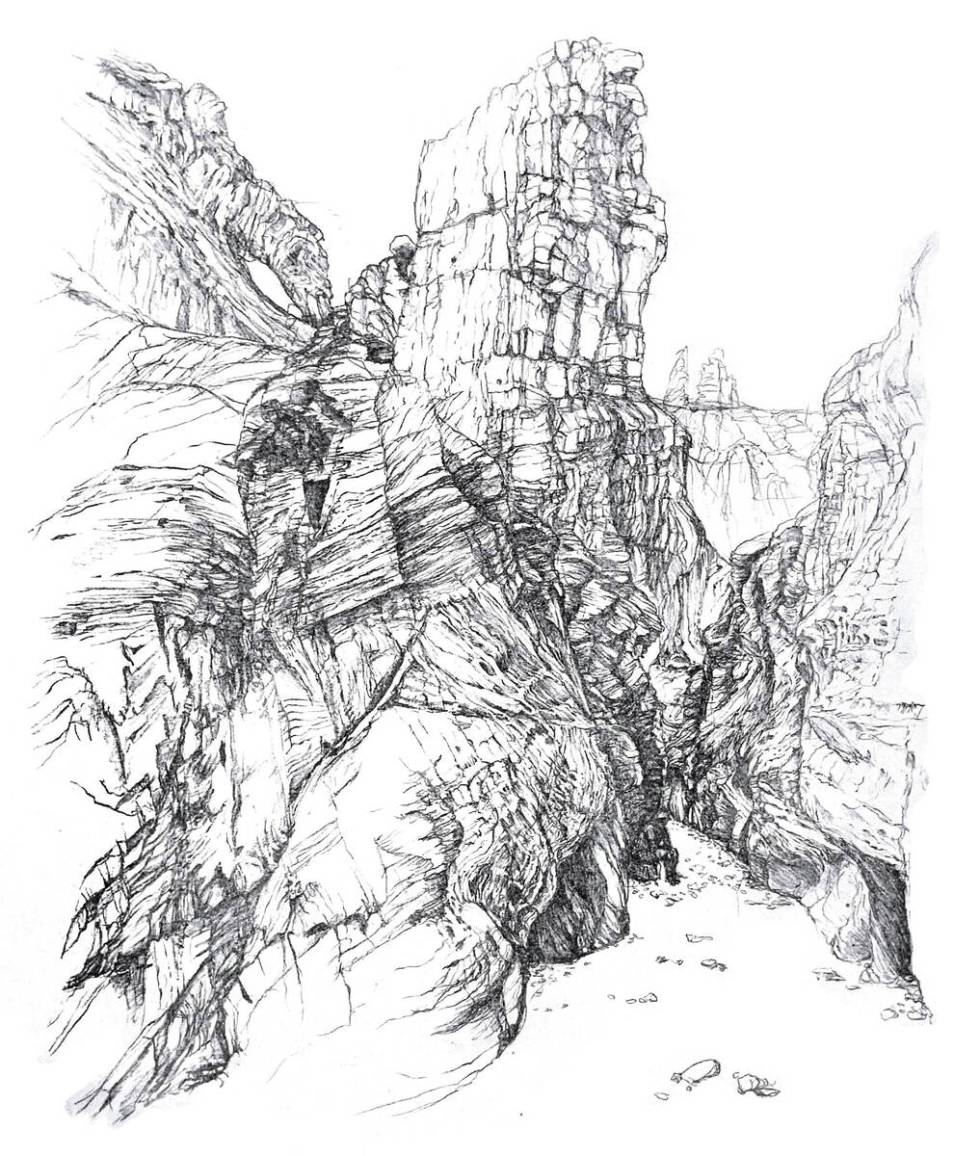
Anne Hoff takes inspiration from the complex beauty she spots in the bark of pine trees, the sword-shaped leaves of Mojave yuccas and the contours and colors of desert geology. She’s affected by the contrasts she discovers while hiking, the harsh angles she sees everywhere in the landscape and the softness she feels in the desert air.
“I’m really trying to capture the expanse of the area and a sense of the quality of the air,” she says of her work using a lithography process that she calls an “old, crazy, not-so-lost art.”
Hoff recently demonstrated how she made multiple prints of her “Skittering Yucca” through a printing press and a chemical process that started with her use of a lithographic crayon to draw on a canvas of Bavarian limestone. She used 18th-century technology to pay tribute to a plant that’s been around these parts for hundreds of thousands of years. “Some may see yuccas as scrappy weeds,” she says, “but I think they’re just so amazing.”
A longtime art professor at the College of Southern Nevada, Hoff teaches the technical secrets of printmaking and the techniques of drawing. She encourages her students to “get giddy with focus and happiness,” an approach Hoff adopts herself and suggests everyone else applies to their work.
Hoff’s admiration for Southern Nevada’s natural environment extends beyond the yucca-filled desert floor. “Talk about tenacity and strength,” Hoff says of individual bristlecone pines that have lived thousands of years above the 9,000-foot level in the Spring Mountains National Recreation Area. “They’ve been twisting and surviving for so long. We’re just a blink in their eyes.”
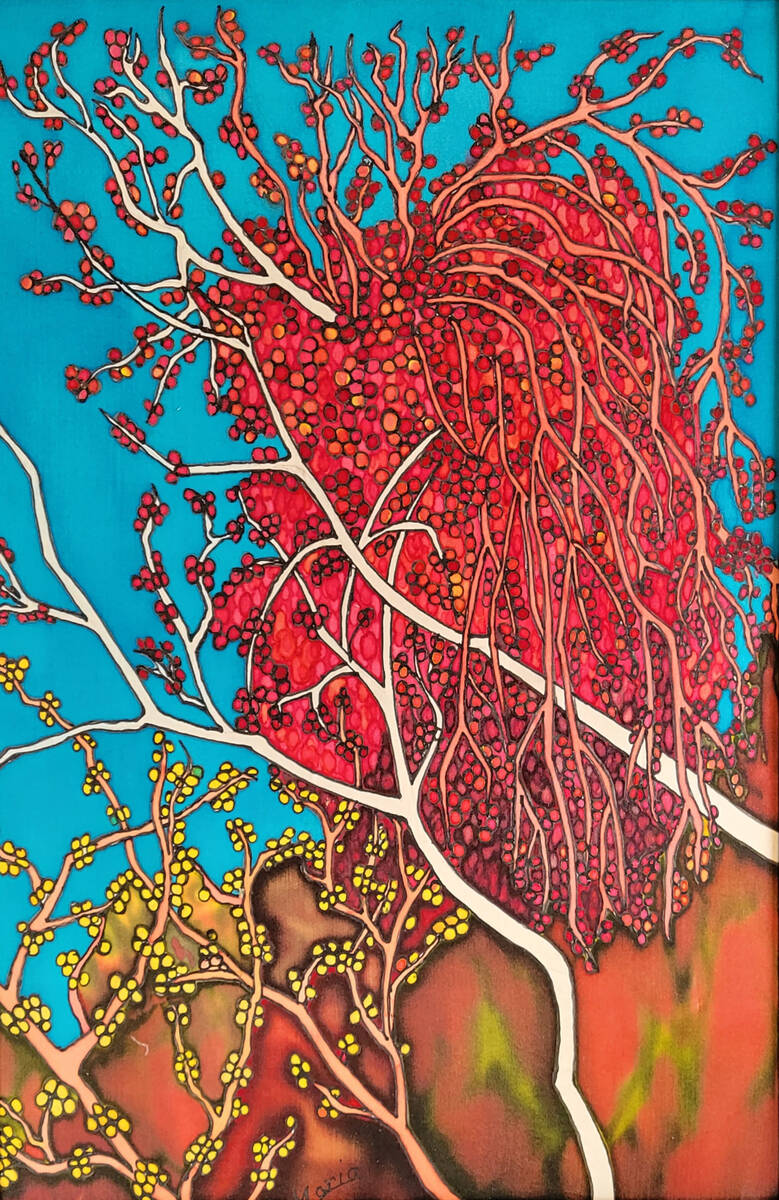
Painter Maria Volborth, who has a home and healing labyrinth in Nelson, south of Las Vegas near the Lower Colorado River, has similar sentiments about the long lives of lichens that appear as shocking blotches of bright orange, chartreuse, lavender and other bright shades on desert rocks. Scaly patterns on snakes and lizards also appeal to her, as do the Mojave Desert’s plants and big skies. All regularly are brought to vivid life in her oil paintings, silk designs and mixed media creations.
Volborth continues to admire the big picture and tiny details of the East Mojave that fascinated her as a little girl decades ago when she tagged along with her geologist father, who was the first to map mineral contents of Southern Nevada mountains from Gold Butte to Spirit Mountain, which in the Mojave language is known as Avi Kwa Ame (pronounced ah-VEE kwa-meh).
“That inspired me for my love of the desert and just being out here painting.” Volborth says. She hopes those who see her art will enjoy “a sense of discovery about what’s out there and how to look at things maybe in a little bit of a different way. There’s beauty in everything that you see.”
Sitting across from Volborth at a dining room table with a spectacular view of hundreds of Joshua trees just outside Searchlight at the Mystery Ranch, fellow artist and curator Kim Garrison Means shares her impressions of the impact of Volborth’s paintings: “One thing I like about your nature work is how much playfulness you have in your materials and in your approach to investigating the colors and the textures and the feeling of all of these different plants and animals and rocks and scenes.”
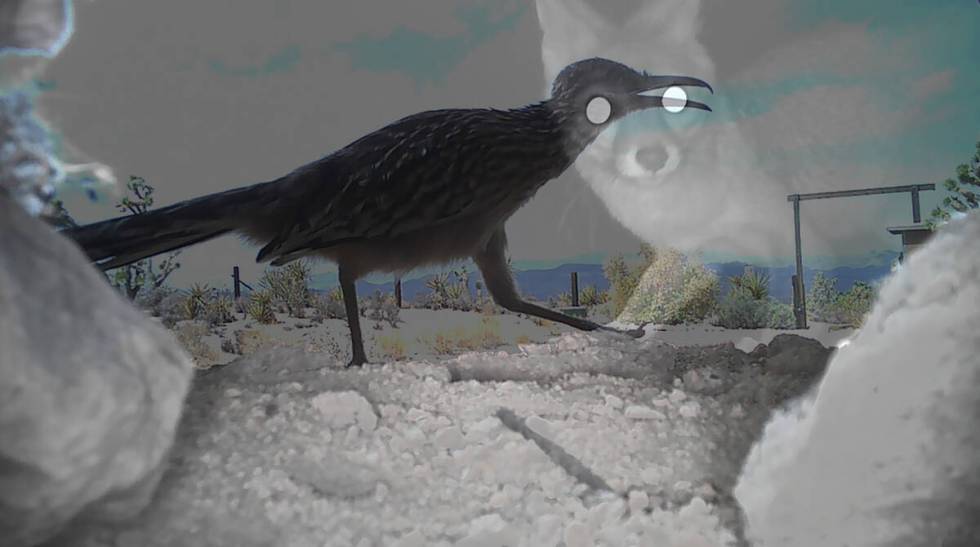
Means and Steve Radosevich are partners in the Searchlight-based conceptual-art duo United Catalysts. Their knot of East Mojave art and advocacy would be tough to unravel. “Our art can look like anything,” Means says, “in any media and in any form. Because the story we want to tell comes first.”
For the past couple years, that story has been one of advocacy for Avi Kwa Ame, and they have created art to help persuade others to support protecting the area, which is revered by a dozen Indian tribes.
Means helped to curate the “Spirit of the Land” exhibition at UNLV’s Marjorie Barrick Museum last year as well as satellite programs in Searchlight and Laughlin. Other United Catalysts-backed projects include a vibrant 60-foot mural titled “Searchlight Treasures,” which is filled with images of animals that make the Mojave Desert their home, and the creation of a yearly publication, Searchlight Gold Beam.
For the “Spirit of the Land” exhibition, Means and Radosevich’s artistic contribution started with a camera the duo set up at their Mystery Ranch wildlife pond, which gave them access to ghostly images of a menagerie of thirsty nighttime visitors. Their digital collage stills from their “Proof of Existence” footage show overlapping images of animals including coyotes, desert cottontails, great-horned owls, a badger, a Gambel’s quail and a kangaroo rat.
Radosevich says the images add evidence to counter any argument that the Mojave Desert is a wasteland with few animals. The pictures coming out of the wildlife camera have also provided the pair with hope as they have weathered grief and worry about the effects of sustained drought on animals and plants in the Mojave Desert.
“You’re only really frustrated if you can’t act,” Radosevich says. “This was our action.”
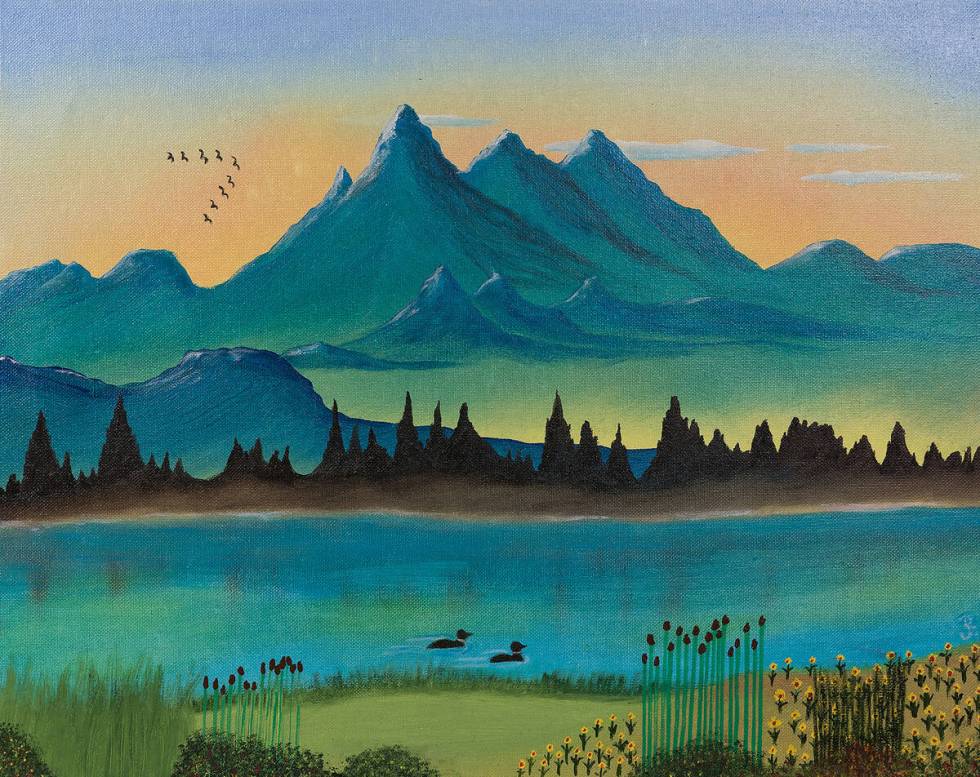
The paintings of Paul Jackson are animated by his desire to educate viewers about the sacred Avi Kwa Ame landscape and its inhabitants. Jackson, a Fort Mojave tribal leader, also uses art to capture and keep the attention of the children he teaches in the tribe’s cultural center. A pair of Jackson’s paintings this year went into the national collection at the Department of the Interior as part of the national monument’s designation process. One painting depicts Avi Kwa Ame under starlight and the other by day with the Lower Colorado River flowing in the foreground (“Mojave” means “along or beside the water”).
“They are not just paintings or drawings,” Jackson says. “They all have a piece of history or something religious or a fairy tale.” A painting of the starry skies above Spirit Mountain might include the Big Dipper, which storytellers of the Mojave tribe portray as a large fishing net being thrown into water.
Such stories are part of the mountain and why protection of the setting of the Mojave tribe’s creation is critical. “That area is so sacred to us,” Jackson says. “It’s our church. It’s our creation story.”
Jackson calls his paintings “teaching tools.” He tries to emphasize the spiritual connections among creatures, including man, and their relationships to the land and sky.
“We’ve got to take care of this entire world,” he says. “Everything is connected. When you sit and listen and have patience, the river will talk to you. When you sit and listen and have patience, the mountains will speak to you.”
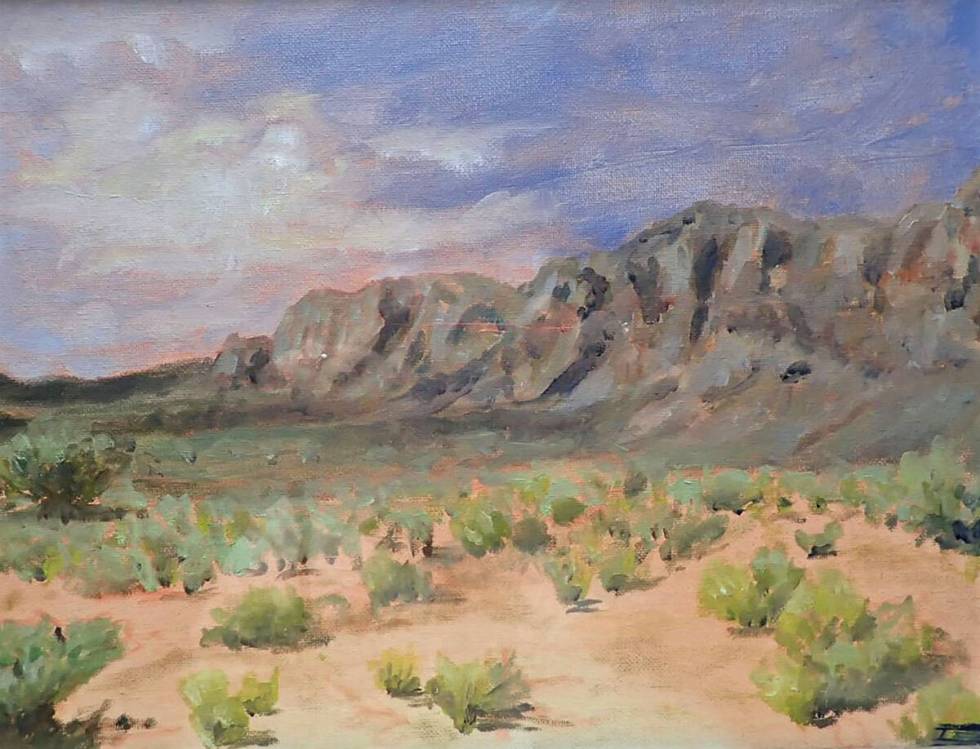
Daryl DePry is an avid hiker and backpacker who paints and draws landscapes and detailed sections from pine forests to desert scrublands. He heads out to the less-trodden trails of Red Rock Canyon and Mount Charleston, art supplies in hand, to connect with nature and quiet the noise of city life.
DePry, a longtime art instructor at College of Southern Nevada, has a skillset that includes drawing, painting, printmaking and woodcut work. His meticulously detailed drawings and prints of bristlecone pines mix with more impressionistic paintings capturing soft light falling on mountains surrounding Las Vegas.
“What I hope to convey is that there is this amazing natural place out here that seems to be stigmatized as a wasteland,” DePry says. “But I think people don’t realize it’s really gorgeous. It’s full of light, sound and color that requires no electricity. It heals you of the city and its artificial sights, sounds and lights.” ◆
In Search of Desert Art
Mojave Desert artists have created an abundant body of work. Public art even shows up for motorists along Blue Diamond Road on painted utility boxes and at other busy intersections in spots across the valley — a bighorn sheep stares through traffic, and two colorful burros add cheer to the morning commute. There’s no need to get out of the car to see large-scale representations of roadrunners, yuccas, cactuses, Gila monsters, desert tortoises, wildflowers and coyotes decorating Las Vegas-area exits along Interstate 15 and U.S. Highway 95.
Nonetheless, art lovers will be rewarded when they step out of the car to explore further, whether stopping by Boulder City’s Art in the Park in October or searching the internet for nearby gallery shows of local artists’ work. Nature-influenced artists, with their creative interpretations that go beyond even the most stunning photographs, can open minds to new ideas, affirm long-held impressions and provide different paths for thinking about the Mojave Desert.
Exhibitions of these artists’ work often helps — directly or indirectly — to shape discourse on conservation of the Mojave. Last year, the “Spirit of the Land” exhibition at UNLV’s Marjorie Barrick Museum of Art featured the work of 40 artists who gave visitors an opportunity to consider whether the 792 square miles of Southern Nevada wilderness known as Avi Kwa Ame deserved national monument status. That recognition ultimately came this past March.
You can also find the work of Mojave Desert artists in the Las Vegas Arts District, at downtown Henderson’s City Lights Art Gallery and in the Boulder Dam Hotel in Boulder City. Nature-influenced local art also shows up in gift shops at the Desert National Wildlife Refuge and other public lands visitor centers. Occasionally, Mojave Desert-influenced art gets displayed in local government spaces, cultural centers, libraries and venues like Clark County Wetlands Park or Searchlight Community Center. Nevada Humanities also plays a major role in helping the nature-themed work of local artists come into public view. – Natalie Burt















